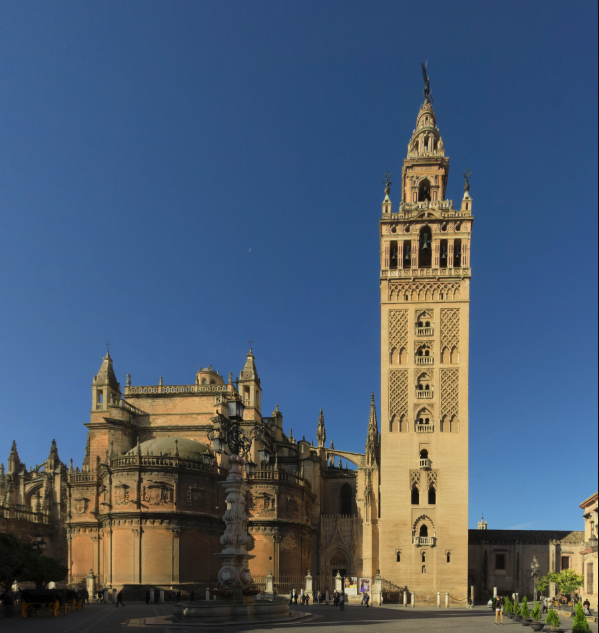Seville provides a great arrangement of antiquity and art from the Neolithic era to the constantly growing age of modern art, serving as the centre of Andalusian history and culture. These must-see museums in Seville were established in structures that represent the elegance and culture of their Andalusian forebears as well as those that illustrate difficult historical outcomes. They play a crucial role in one’s exploration of this culturally rich town.
Museum of Arts and Traditions of Seville (Museo de Artes y Costumbres Populares)
The magnificent Mudéjar Pavillion, designed by Anibal Gonzalez and built-in 1914, is housed in The Museum of Arts and Traditions of Seville, on the other side of Maria Luisa Park’s Plaza de America. The museum itself has tales and artefacts that depict an interesting social history and a fascinating look into the day-to-day activities of obedient Andalusian ancestors.
Timings: 9 am – 9 pm
Tickets: EU-residents – free, non-EU – 1.5€
Address: Pl. América, 3, 41013 Sevilla, Spain
Best time to visit: Winters
Flamenco Museum of Seville (Museo de Baile Flamenco)
The Flamenco Museum in Seville is undoubtedly a brilliant idea, and it was founded by the renowned flamenco singer Cristina Hoyos of Seville. Even though the museum is small, it offers a significant grasp of flamenco history through sketches, paintings, photographs, and various iconic outfits from the 18th century. No flamenco history is perfect without enduring the charm and unconditional passion up approaching any person, especially in a place where the source is so intense.
Timings: 11 am – 6 pm
Tickets:
0-5 Years: Free
6-12 Years: €5.00
Adults: €10.00
Seniors(65+): €8.00
Students: €8.00
Address: C. Manuel Rojas Marcos, 3, 41004 Sevilla, Spain
Best time to Visit: Summers
Archaeological Museum of Seville (Museo Arqueológico de Sevilla)
The Seville Archaeological Museum was founded in a 1920s arcade in Plaza de America, inside the stunning Maria Luisa Park, and is considered Andalusia’s most significant archaeological acquisition and museum because it contains a preponderance of artefacts from the Roman cavity of Italica, incredible ruins just outside the town.
This museum successfully and tastefully affirms the many ruling periods of Spain and offers an intriguing look into the history of the Andalusians who controlled the region 1500 years ago. This museum is a must-see because of its famed statue of the Phoenician fertility goddess Astarte-Tanit.
Timings: 9 am – 7:30 pm
Tickets: EU-residents – free, non-EU – 1.5€
Address: Pl. América, s/n, 41013 Sevilla, Spain
Best time to Visit: Autumn
Museum of Fine Arts (Museo de Bellas Artes)
Originally housing the nunnery of Merced Calzada de la Asunción, it was built by St. Peter Nolasco during the reign of King Ferdinand III of Castille. It is the Museum of Fine Arts in Seville, Spain, and is regarded as the second-most significant museum of Spanish art in Seville. Spend a few minutes of your vacation to marvel at everything the Museo de Bellas Artes has to offer. Not only is the acquisition stunning, but the patio gardens and buildings are also brand new.
Timings: 9 am – 9 pm
Tickets: EU-residents – free, non-EU – 1.5€
Address: Pl. del Museo, 9, 41001 Sevilla, Spain
Best time to visit: Winters
Inquisition Museum (Castillo San Jorge)
The original headquarters of Spain’s famed inquisition in the 15th century grew on the edge of the shovelled Castillo of San Jorge, which dates to the 12th century. In this museum, you can see the remains of the castle as well as how the cell blocks were arranged. It is renowned throughout the world as a place of introspection since it frequently tells interesting stories that shouldn’t be ignored.
Timings: Wednesday and Friday: 10 am – 2 pm.
Tickets: EU-residents – free, non-EU – 1.5€
Address: Pl. del Altozano, s/n, 41001 Sevilla, Spain
Best time to Visit: Fall
Carriage Museum of Seville (Museo de Carruajes)
It was started on October 17, 1999, to help people understand the horse-drawn waggon industry. This exhibit stands out among the Seville museums in a certain way. You would be astounded to see how meticulously arranged the waggon is in various historical periods. Furthermore, visiting this distinctive museum in Seville, Spain is merited even if you only do it to observe the nunnery that was created there in the sixteenth century.
Timings: 9 am – 2 pm
Tickets: 5€
Address: Pl. de Cuba, nº10, 41011 Sevilla, Spain
Best time to visit: Winters

